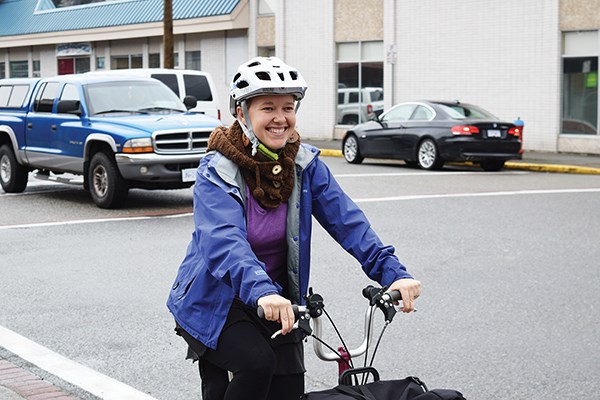An initiative to make it safer for students to walk to school is underway in Squamish.
Students, parents, District of Squamish officials and other stakeholders laced up their shoes and did the first of three school walkabouts Wednesday at Mamquam Elementary to look at how to overcome barriers to walking to school.
“The whole purpose of school travel planning is to connect communities through cycling and walking,” said Keely Kidner of Hub for Active School Travel (HASTe).
The program also aims to make it easier for those who are already walking or cycling, she said.
Kidner is working with Mamquam Elementary, Squamish Elementary and Garibaldi Highlands schools to get students out of cars on the way to and from school.
The three schools were chosen by a stakeholder committee that includes, among others, representatives from the district, the RCMP and ICBC.
More schools will be included in the program in future years, Kinder said.
Earlier this fall, the group surveyed children and parents to find out how children are getting to school and reveal the barriers to walking and cycling.
A distance of 1.6 kilometres represents a 15-minute walk to school, and that distance is possible for elementary school students, Kidner said.
Of students who live within a 15-minute walk from Squamish Elementary, 45 per cent are driven to school, she said.
At Mamquam Elementary, 31 per cent of those who live within a 15-minute walk to school are driven, she noted, while at Garibaldi Highlands, 27 per cent within range are getting a ride.
“We are trying to get to 100 per cent of those who live close to school to walk or cycle to school, and that is why we are going to try to identify what those obstacles are,” Kidner said.
At all three schools, parents said they drove for convenience and because the school was on the way to somewhere else, so they could easily drop off the children. At Squamish and Mamquam Elementary schools, parents also expressed concern about traffic safety, while at Garibaldi Highlands, they worried about distance.
Parents who drove their children said they would let their child walk to school if their child were older, would not have to walk alone and if traffic was lighter.
The most positive information that came out of the surveys was that almost all parents support the effort to get more students walking; 95 per cent supported the initiative at Squamish Elementary, and 99 per cent of parents at Mamquam and Garibaldi Highlands were in favour.
Action plans will be put into place, Kidner said – “standard infrastructure changes or policy changes or school programming… that is where we are heading.”
Tackling people’s perceptions is a challenge as well, she said, noting the fear of a stranger abducting a child, which she said is highly unlikely in Squamish but concerns some parents. She pointed out there are also risks to driving students to school.
“It’s looking at what is coming out of the research and what are the risks actually in terms of health – physical health, mental health – being driven to and from school every day.”
The problem of children being driven to school is relatively new. Nationally, about 58 per cent of parents walked to school themselves when they were young, Kidner said, but now only 28 per cent of children walk.
“What school travel planning and HASTe is all about is to try and turn back the clock on that in terms of getting kids back out walking and getting involved with their community and gaining independence, being more healthy,” she said.
At the start of next year, maps showing active and safe routes to school will be sent home with students, Kidner said.
The next school walkabouts will be Dec. 9 from 8:15 to 10:45 a.m. at Garibaldi Highlands and Dec. 17 from 2:30 to 5 p.m. at Squamish Elementary.
Squamish council allocated $60,000 for the HASTe program in the 2015 budget.
For more on the program, go to www.hastebc.org.



